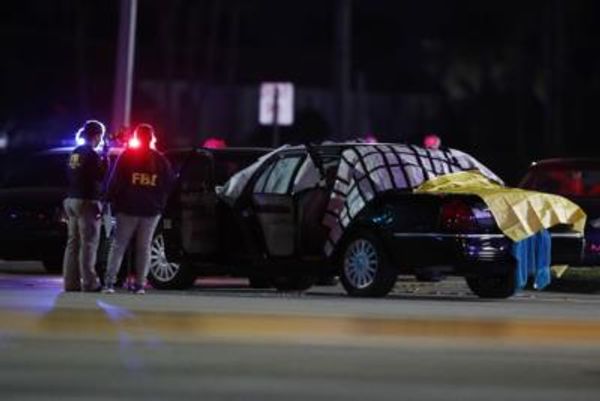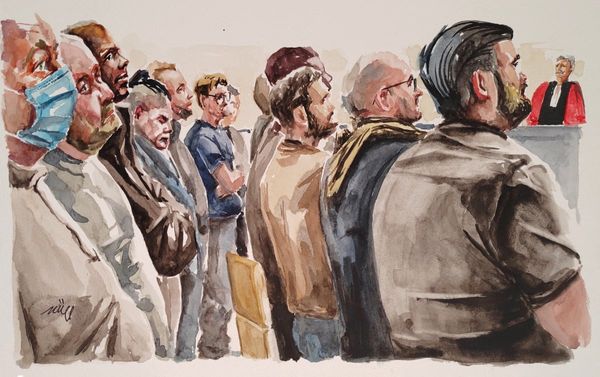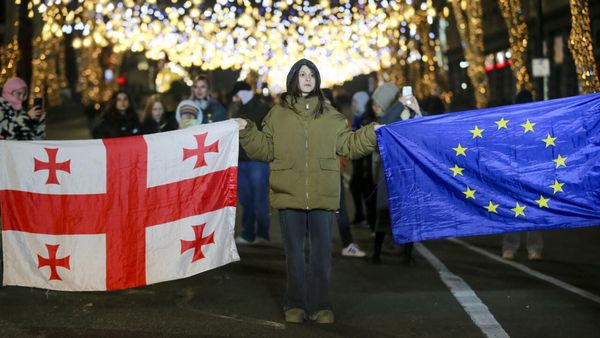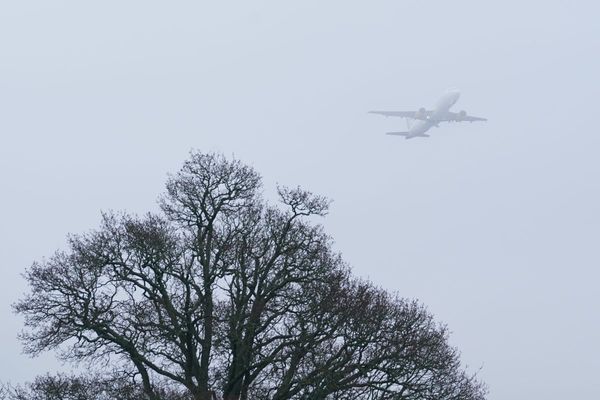
On January 3, a Hanuman temple in Chandni Chowk, located between the Town Hall and the Fountain Chowk, was demolished on the Delhi High Court’s order. The order had come on a case filed in 2007 related to the redevelopment and decongestion of the Old Delhi hub.
On February 19, a new temple “miraculously” appeared close to the same spot, built out of steel. The authorities who had not disputed that the demolished temple sat on encroached land welcomed the construction of the new structure, in blatant disregard of the court’s order that took over a decade to arrive at.

Asked how a temple had come up illegally, the head of the North Delhi Municipal Corporation, or NDMC, tasked by the court to demolish the old structure, told the Indian Express that permission wasn’t required when it was “an act of God”.
AAP legislator from Chandni Chowk, Parlad Singh Sawhney, took no issue with the structure either. “The mandir was set up by the people of Chandni Chowk,” he said. “We do not have any objections to the move. This is the home of God, why would we object to it?”
This is in contrast to the stand of the Public works Department of the Delhi government, which is controlled by AAP, in the court. They consistently asked it to direct the municipality to remove the structure as per the order.

The Temple
On the central walkway about a kilometre from the Chandni Chowk metro station, the steel box that has replaced the demolished temple, which had stood for 47 years as claimed in court, is unmissable. On February 26, a red carpet was laid out in front of the temple. Rickshaw pullers slowed down as they passed it, never missing a chance to tell their customers how it had appeared “miraculously”.
A group of shopkeepers stood on the pavement near the temple, talking about it. They said the demolition had been “extremely painful to bear”.

“This temple had a very special place in our hearts. The first thing we shopkeepers did everyday was pay obeisance at the temple. When it was demolished, I was heartbroken,” Atul Kumar Pandey, 24, said. “It was done in the middle of the night, with huge barricades on either side and a large police presence. I remember it was especially cold that night, and it had even rained. The next day, we found rubble in place of our temple. But we continued to place our heads on it and be blessed. When we saw the new temple we were all so happy. There were bhajans, kirtans, it was like Diwali. None of us know who made the temple but we are grateful to them. Perhaps the priest will know, but we don’t know.”
The priest, Ashok Kumar Sharma, sat beside the temple in a white kurta, his eyes glued to the activity inside. He claimed that he has been the temple’s priest since it was built in 1974. When it was ordered to be demolished he had asked that it be relocated, the priest said, but that didn’t happen.


‘Why does it matter who made it?’
The priest lit a cigarette, smiled and said, “Why does it matter who made it? Just like Lord Ram came back to Ayodhya, it is only fitting that his devotee, Hanuman, has returned to Chandni Chowk. He wanted to come back and now he’s here, that is all there is. It’s the will of the people that has brought him back. I am not afraid of this one being torn down. The BJP is on our side and so are the people.” BJP controls the municipal body and has not opposed the construction.
As if to prove the priest’s point, many local shopkeepers visited the temple throughout the day and offered seva, or free service.
VK Kapoor, 56, who owns Ritu Design, which sells bridal wear, offered to pay for the electrification. “I am doing this because I have love for the temple in my heart. I do not expect anything in return,” he said. “If Hanuman hears me talking about this to you, he’ll get angry. I don’t want any credit.”
The temple attracted more than shopkeepers. Many passersby stopped as well. “The timings of the temple are from 5 am to noon and 5 pm to 9 pm. Since the temple came back there have been more people coming and offering their prayers here,” said the priest. “It is a great feeling.”
The priest and couple of shopkeepers excitedly discussed plans to organise a grand Hanuman Jayanti function in April and expand the structure and make it more aesthetic. That it had been built illegally did not dampen the mood.
Among the visitors to the temple was Dheeraj Kumar, 20. He was with the Nav Yuvak Bajrangi Sevak Sangathan, which he said had been formed in 2012 to protect Hindu temples and propagate the Hindu dharma. Asked who was responsible for building the temple, he smiled and said, “I cannot tell you. It was the collective effort of the people of Chandni Chowk.”
He added, “How can God be illegal or unauthorised?”
With a year to go before the municipal corporation elections in Delhi, the temple seems to have become the site of a political contest. Both AAP and BJP have been trying to use the situation for their benefit. The BJP blamed AAP for the demolition, even though the municipality is controlled by BJP. AAP, on its part, has welcomed the construction as well.
The court case
What began in 2007 as a case over the registration of rickshaw pullers and morphed into a larger one over the course of a decade, enveloping the cause for redevelopment of Chandni Chowk as a whole.
The Chandni Chowk redevelopment plan was initially supposed to be overseen by the Shahjahanbad Redevelopment Corporation, set up by former chief minister Sheila Dikshit in 2008.
In 2013, the project was handed over to the Public Works Department “on account of unsatisfactory progress of the incumbent implementing agency”.
It was on March 21 that year that the temple first found a mention in a courtroom.
One of the parties to the case, the Chandni Chowk Vypar Mandal, filed submissions made by it to the PWD. One of which was that “pavement blockades and encroachments by religious institutions on arterial roads and fountains ought to be removed”. The executive engineer of the PWD submitted to the court that the redevelopment work would commence on January 15, 2014.
In April 2015, the court noted that the clearance of five unauthorised religious structures on pedestrian spaces had not yet been undertaken.
It added, “None of the authorities appearing before the court dispute that these are encroachments. In this view of the matter, the concerned land-owning agency, the Municipal Corporation of Delhi, is hereby directed to remove the said encroachments by the end of May 2015. Government of NCT of Delhi and the Delhi police shall extend their full cooperation in this regard.”
Four months later, the North Delhi Municipal Corporation approached the court stating that the title of the road lay with the state government, so it could not demolish the structures. The court, however, insisted that the agency comply with its order.
In December that year, the MCD filed a status report that showed some action had been taken to remove the obstructions and encroachments on the footpaths. However, the action was limited to three of the five structures – the Digamber Lal Jain Mandir, Gauri Shankar Temple, Gurudwara Sheeshganj Sahib. The Hanuman temple and the Bhai Mati Dass Smarak hadn’t been touched yet.
The court noted, “With there being no dispute that these encroachments are on public spaces, it cannot be argued that the removal of such unauthorised structures constitutes an infringement of the right to profess or practice religion by any sect or body.”
In 2016, three years after the temple had been undisputedly deemed an encroachment, the MCD counsel assured the court that encroachments would be removed by the next hearing.
The assurance went unfulfilled for which the MCD blamed the Delhi police claiming they hadn’t provided adequate assistance to demolish these structures. The police denied this. The court told the agencies to coordinate and execute its order, and asked for a fresh timeline.
In September 2019, the court asked the lieutenant governor of Delhi, who serves as chairperson of the committee on encroachment removal, to convene a meeting with all parties in the case. However, the court made it clear that the committee’s orders would not stop the ongoing work.
The committee announced its proposal two months later, in November. It said, “The two religious structures, the Hanuman mandir and the Shiv mandir, should be made an integral part of the redevelopment plan. It was decided that they may be allowed to exist at the present site after dismantling the platform existing around the temple.”
In response, Pradeep Sachdeva, the owner of Pradeep Sachdeva Design Associates, said, “We, as project consultants, have worked on numerous alternatives to try and accommodate the temple structure but none seem feasible without affecting the user as well as the infrastructure for service of Chandni Chowk…The options are not recommended as they do not find a solution to the core issue caused by the temple’s location on a public right of way.”
Agreeing with him, the court expressed surprise at the committee's decision and rejected the proposal.
It further addressed the concerns that removing the temples would worsen the law and order situation: “The stand of the law enforcement agency that it is powerless to ensure law and order, and therefore, cannot implement the orders of this court and the Supreme Court, if accepted, would seriously threaten the legitimacy of the rule of law and the respect for orders of the Courts.”
The court directed the Delhi government, particularly chief secretary Satya Gopal, to fulfil their constitutional duties and ensure its orders were implemented.

Case of Contempt?
This case is similar to another from the same area. In 2016, a water kiosk outside Gurudwara Sheeshganj which had been demolished by the MCD as per the court’s order was rebuilt overnight. The court had reacted sharply to that.
“This is a plainly unacceptable situation where an open challenge has been posed to the orders of this court by wilfully flouting it with impunity,” the court had said. “The police also cannot plead helplessness in this kind of situation where the efficacy of the rule of law hinges upon the executive extending its full cooperation in ensuring strict obedience of the orders of the court.”
It had further stated the officials entrusted with implementing the orders would be made answerable to the court for any further wilful violations. It also issued contempt of court notices to the chairman and the general secretary of the Delhi Sikh Gurdwara Management Committee for “flouting the court’s order”.
Despite the fact that the Hanuman temple had been undisputedly declared an encroachment on the pedestrian path and eventually demolished after an extended legal battle, it has been rebuilt just a few meters away. Instead of facing repercussions, its construction has been welcomed.
Newslaundry is a reader-supported, ad-free, independent news outlet based out of New Delhi. Support their journalism, here.







